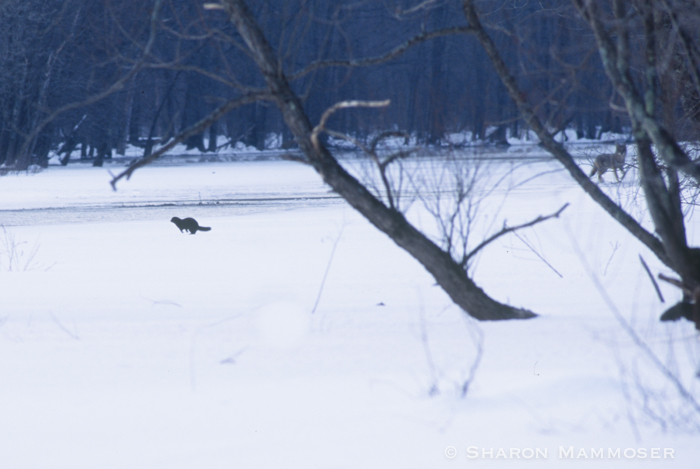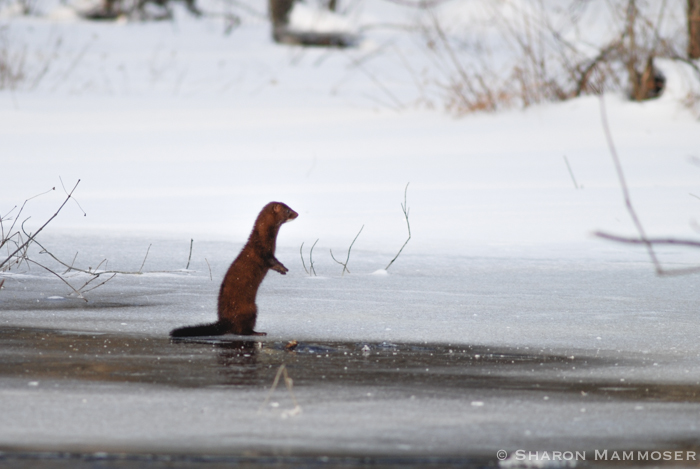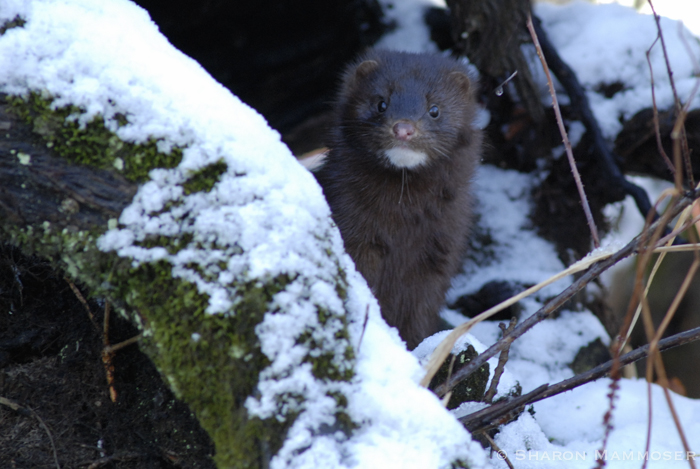If you’ve been following along, you know that last week’s puzzler was tracks from an American Mink. Do you know much about this animal? Have you ever seen one? Though American mink are fairly common throughout much of the United States with exceptions being in dry areas with little access to water, most people don’t encounter them or if they do, don’t know what they are seeing. Mink have a bounding gait and are quick to duck behind a rock, root or tree, but will often peek back out after waiting a bit. If you are looking for this, you can sometimes get to see them numerous times. They will even climb trees though I have never seen one actually do this.
Here are some facts about the American Mink:
1. Mink are members of the weasel family. Like others in this family, they have long, slender bodies and long tails. Mink have small ears, five partially webbed toes and a white patch of fur under their chins. They can be 14-21 inches long, with a third of that being their dark, bushy tail. They weigh 2-4 pounds are have long silky hair with glossy guard hairs. Their fur is waterproof and luxurious, a reason why it was so coveted throughout history.
2. Mink are comfortable both on land and in the water. They are carnivores and will eat just about anything they can catch, including fish, frogs, ducks, lizards, eggs, crayfish, salamanders, grubs, worms, mice, and muskrats. Sometimes they will kill more than they need and will hide it/cache it for later consumption. Mink are voracious predators, able to kill animals like muskrats that are larger or of a similar size. They kill with a quick bite to the neck.

3. Most every source I came across about mink says they are nocturnal, but from my experience living beside a wetland, I know it is not unusual to see them active during the day, especially during winter. Mink frequently travel at the edge of a body of water, be it a stream, river, creek or pond. In winter they travel on the ice, scurrying into open water to escape from predators. They will often stand up on their hind legs in order to get a better view.
4. Speaking of predators, mink are eaten by otters, bobcats, coyotes and owls.
5. Mink make their dens in hollow logs, under tree roots, in old muskrat dens, or old beaver lodges. They are capable of digging their own dens, but seem to prefer using one another animal has already made.
6. Mink are solitary, traveling with a partner only during the breeding season, which is from late January through April. Males will mate with more than one female.
7. Females give birth to 4-6 young mink in late spring. At birth the kits or cubs as they are called, are blind, deaf and furless. They will open their eyes at 25 days and are weaned at 5-6 weeks. They will stay with their mothers until fall.
 8. Mink will purr like a cat and stink like a skunk–they can produce a foul smell that they can give off when threatened. Unlike a skunk, they cannot spray it in a given direction.
8. Mink will purr like a cat and stink like a skunk–they can produce a foul smell that they can give off when threatened. Unlike a skunk, they cannot spray it in a given direction.
If you have a mink story to share, I’d love to hear it! Use the comment box to share your encounter.

